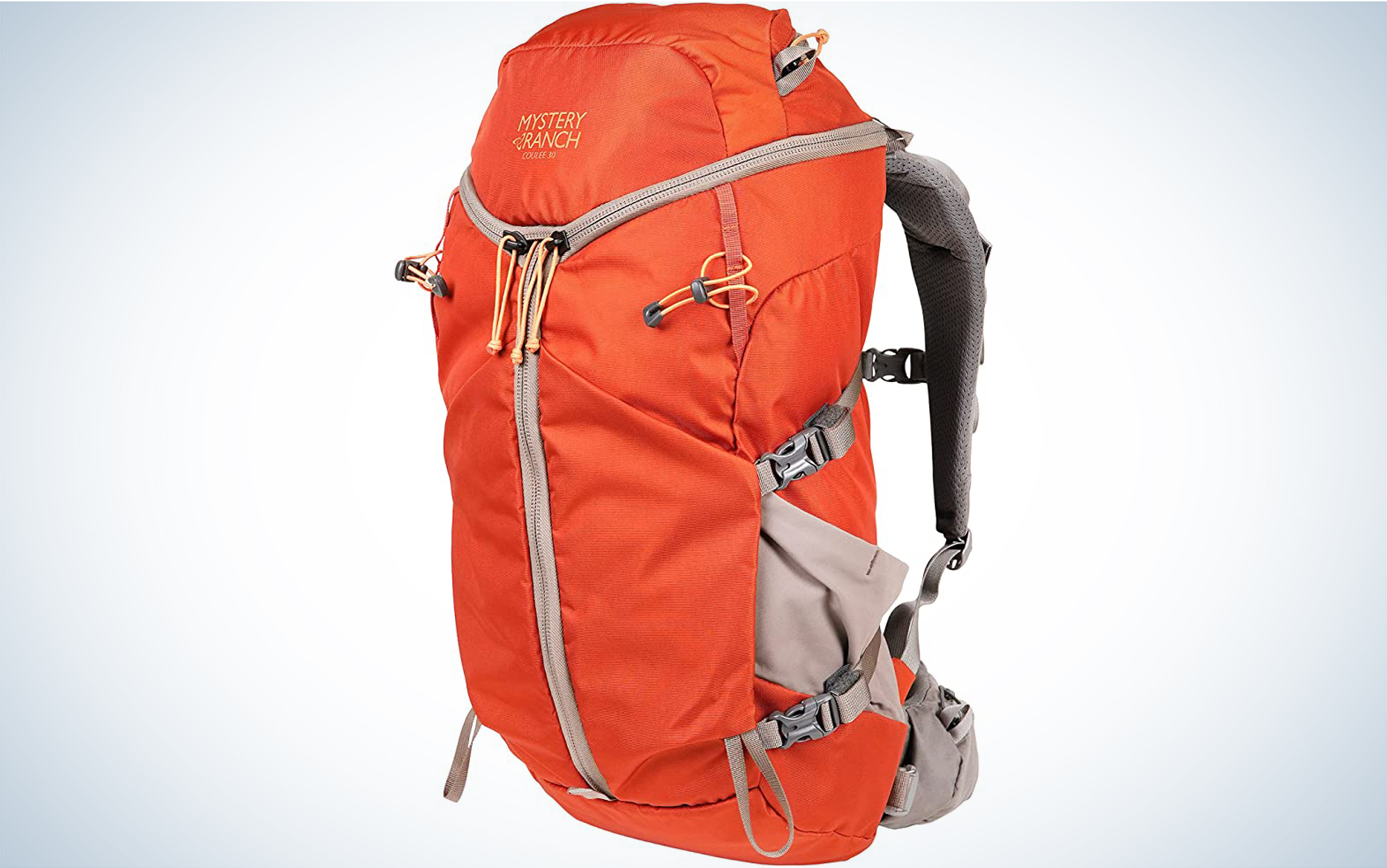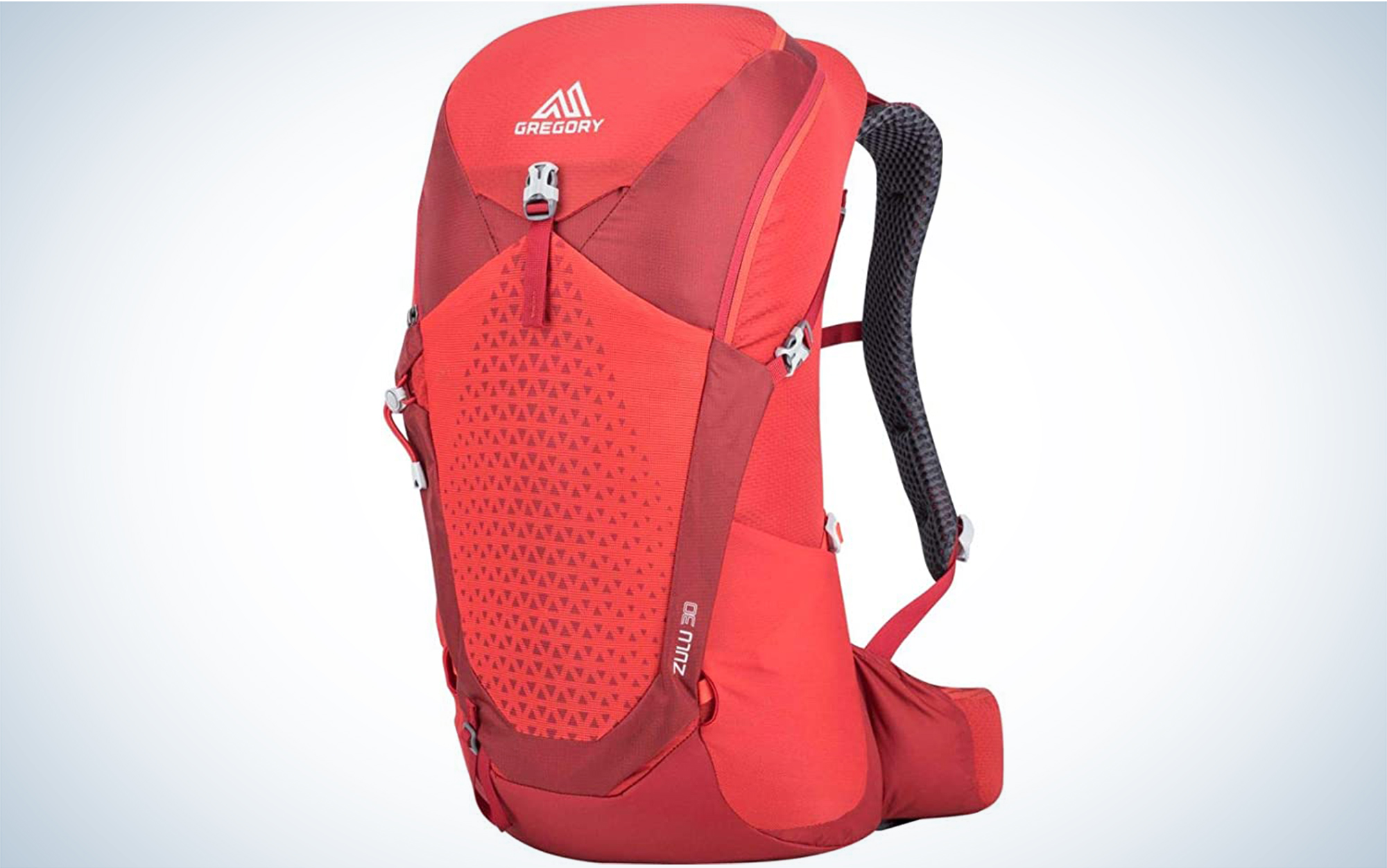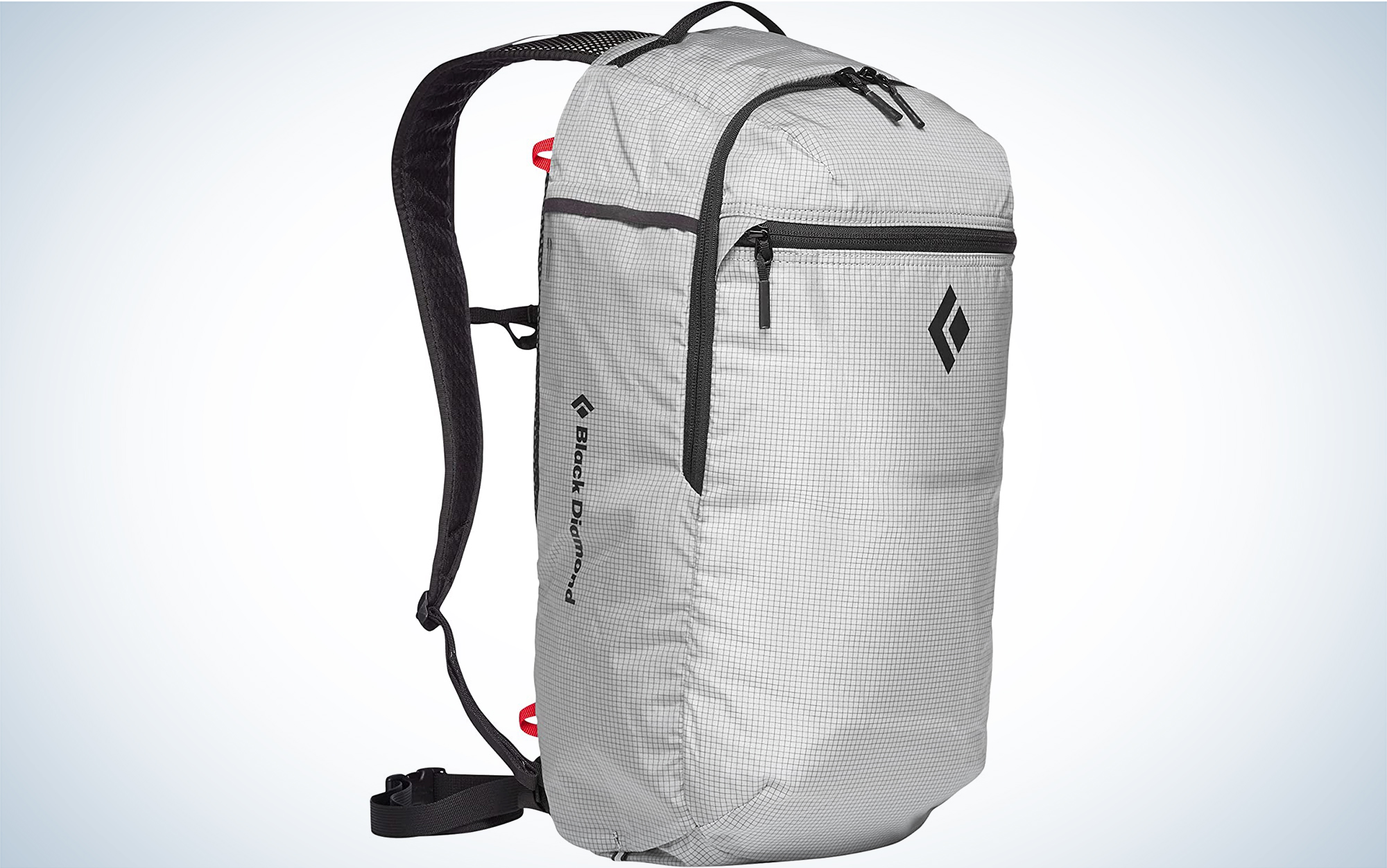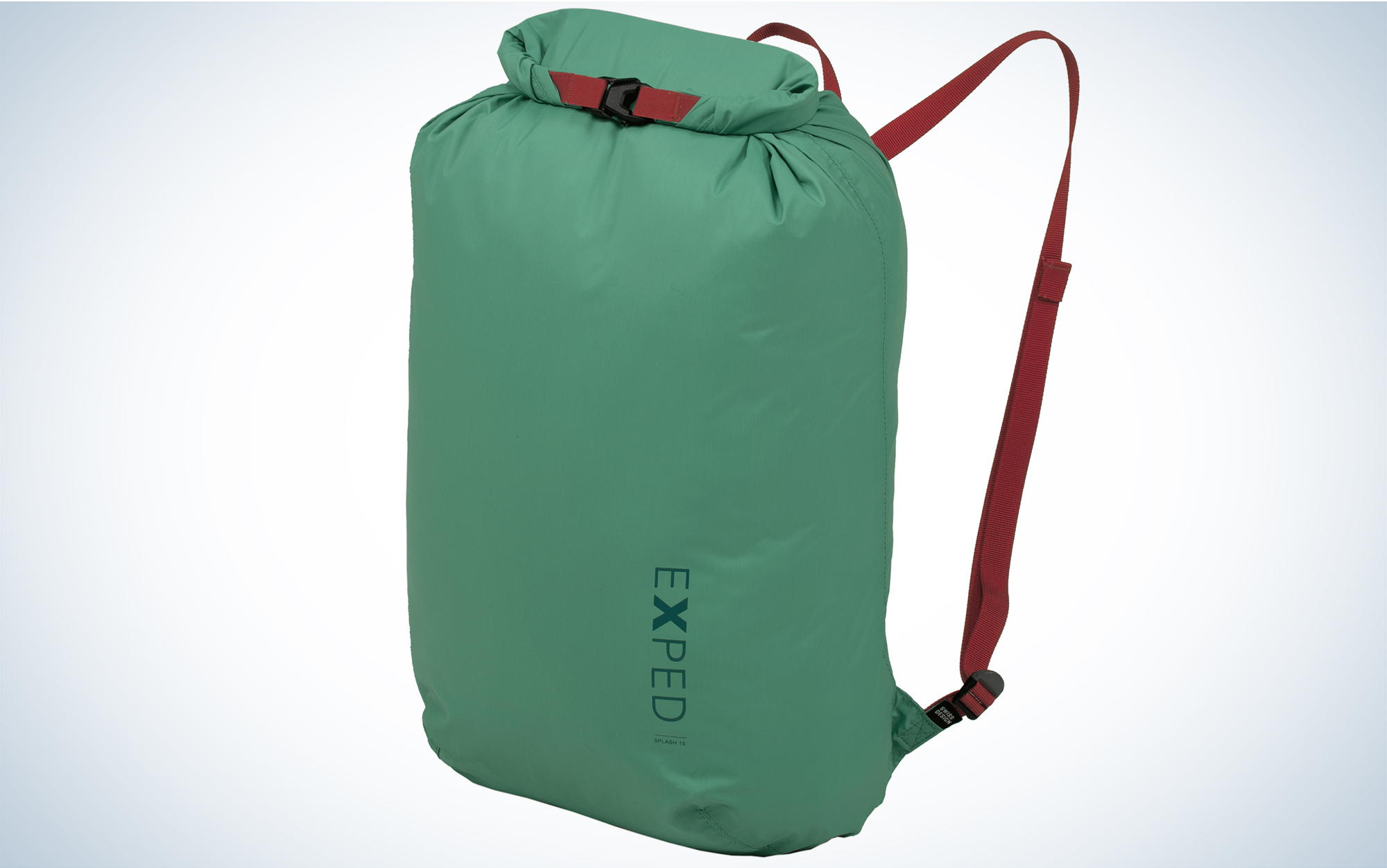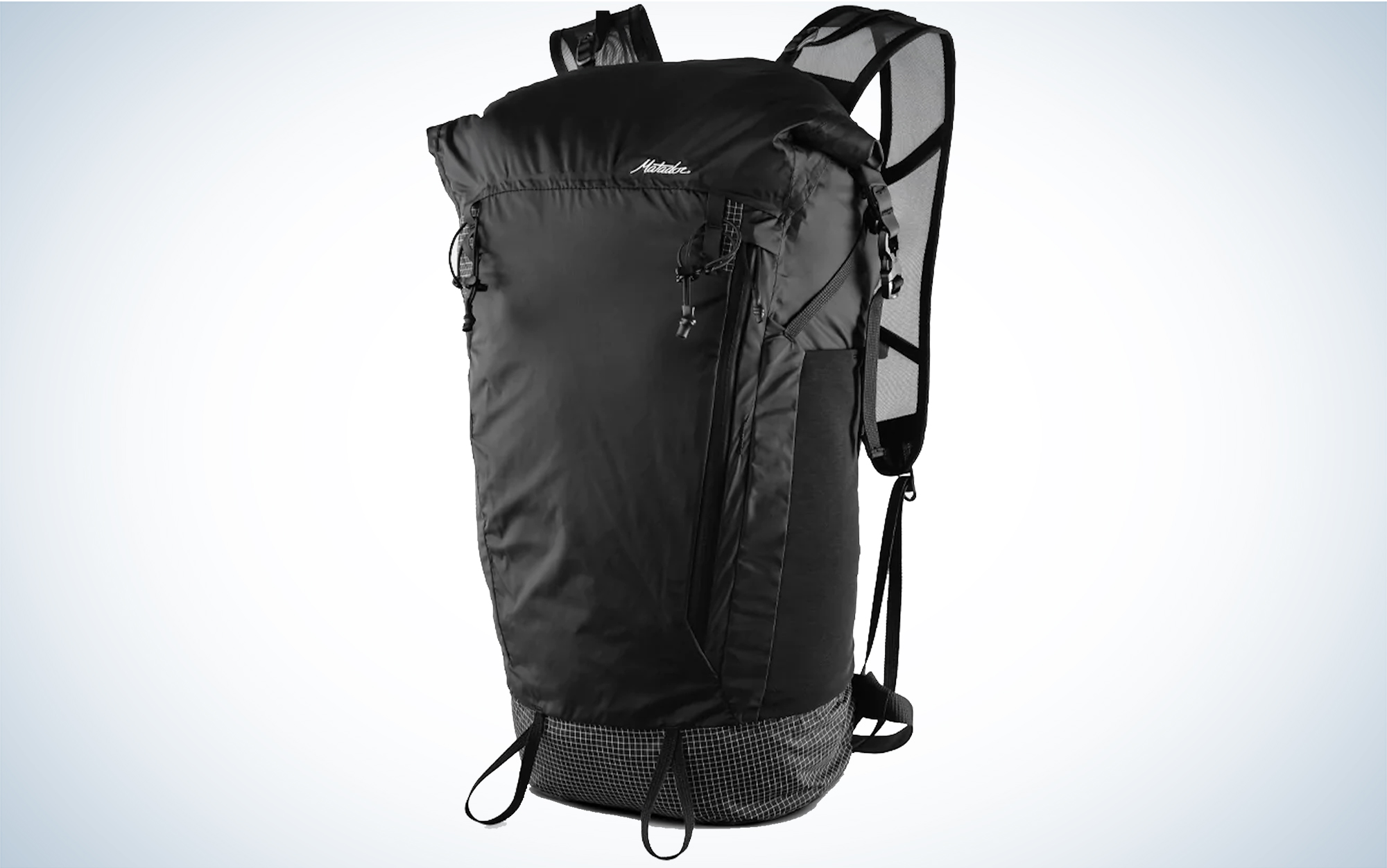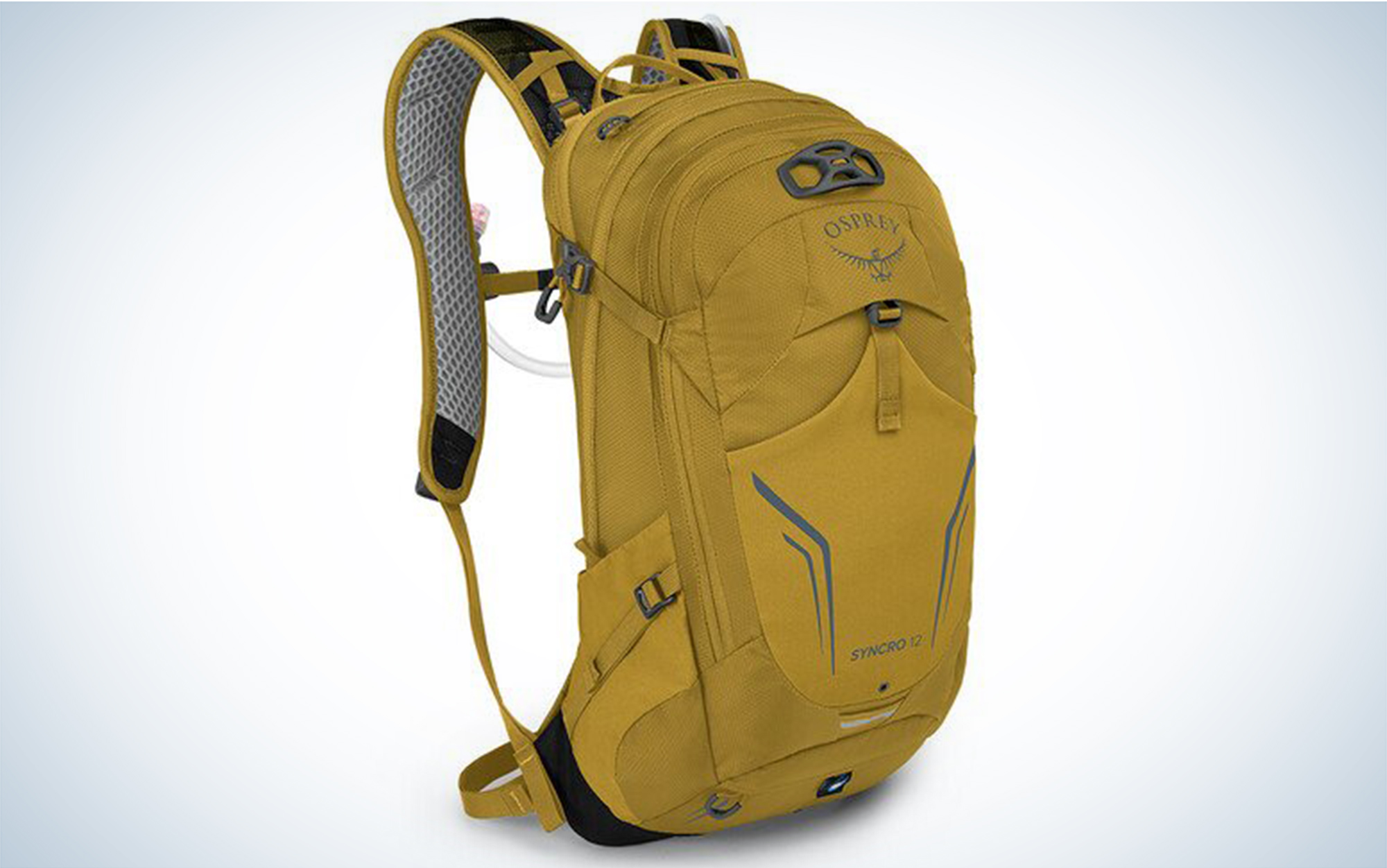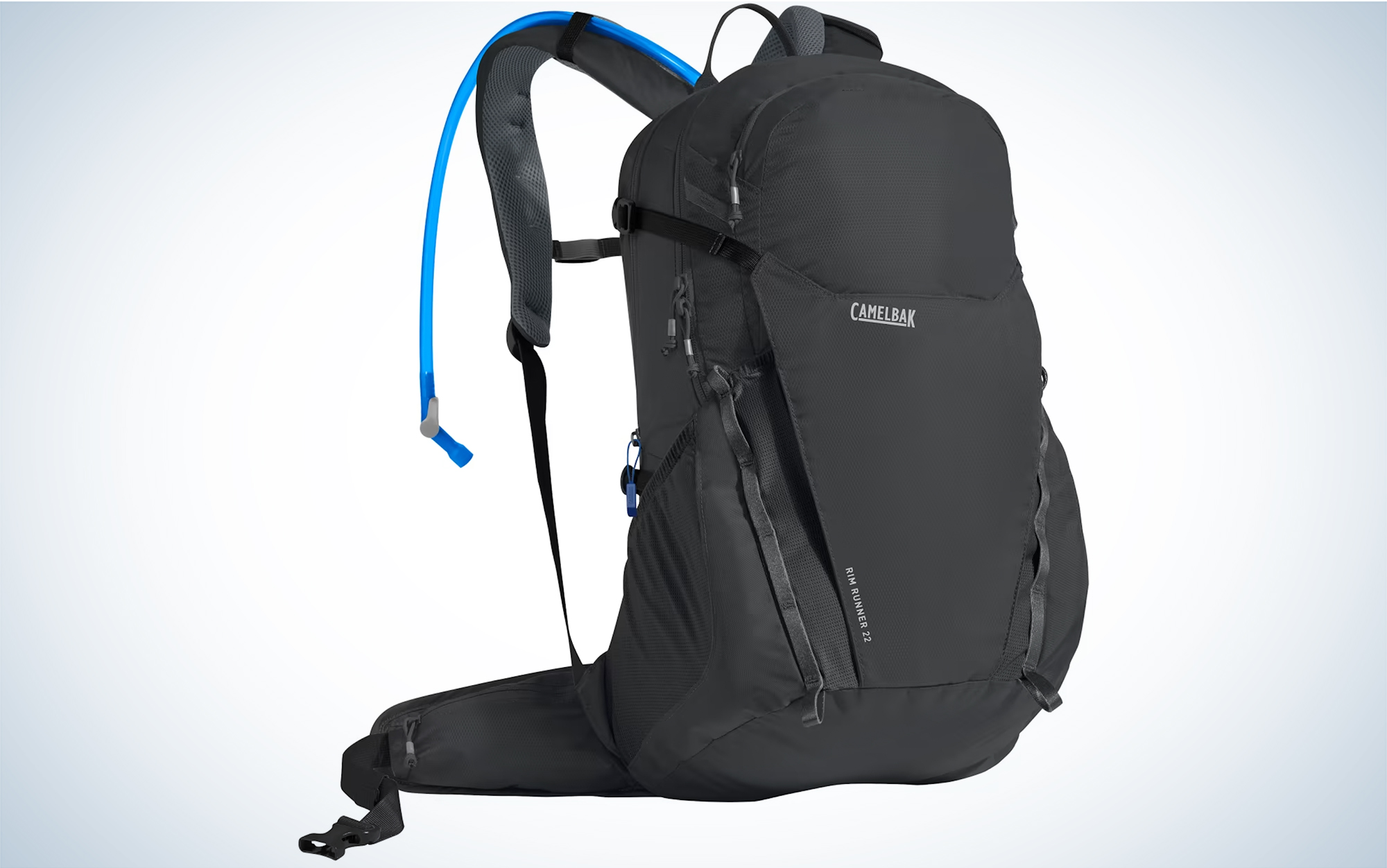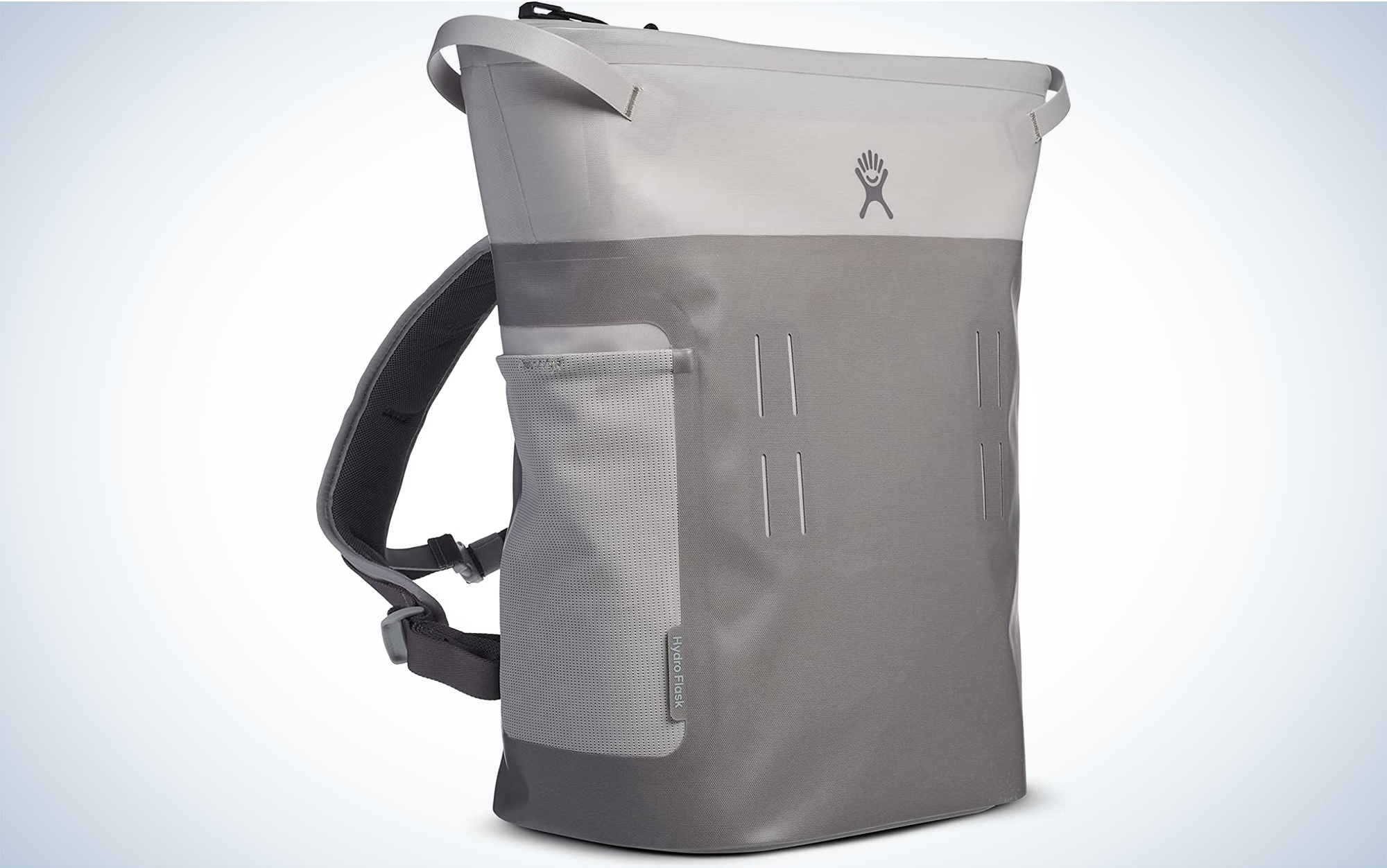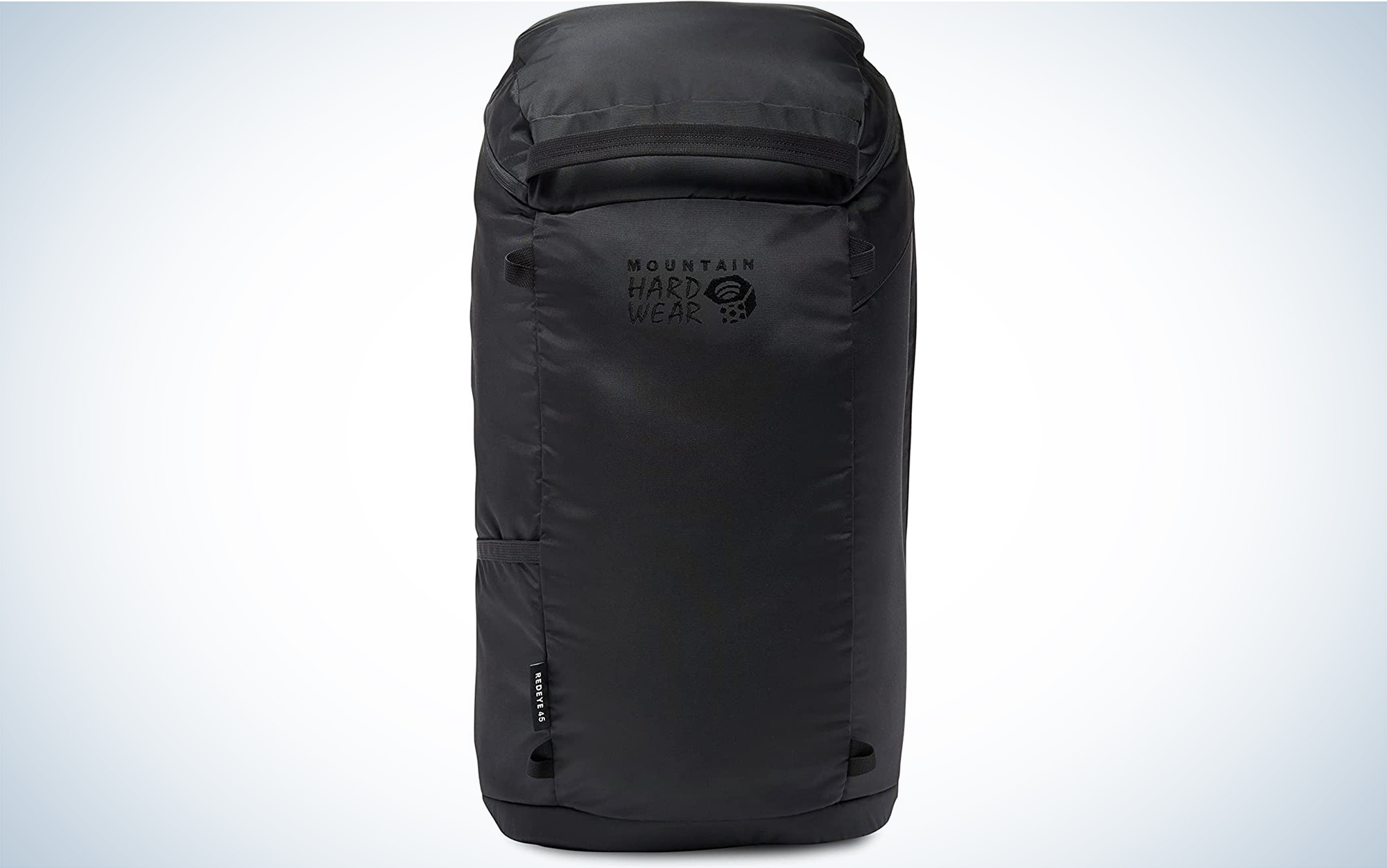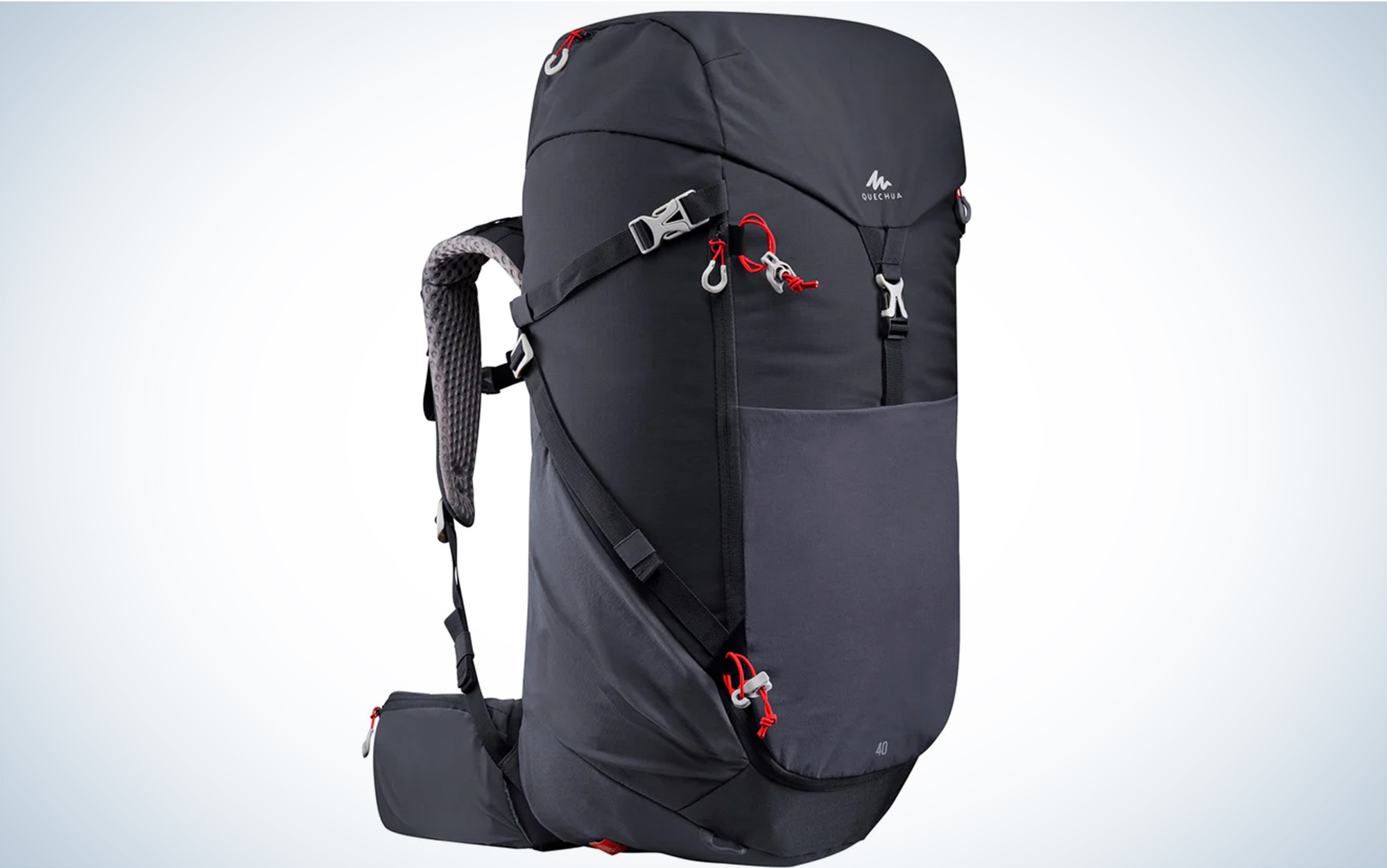We may earn revenue from the products available on this page and participate in affiliate programs. Learn More ›
Published Mar 21, 2023 6:00 PM
Whether you’re leveling up from your existing hiking daypack to carry a heavier load or choosing an outdoor-ready pack for the first time, there are a lot of options to sift through. Do you need a 10 liter or 30 liter? Will a frameless pack be comfortable enough or do you want to pay full freight for true load lifters? Does your backpack need to be waterproof? I took a look at some of the best hiking daypacks available—at a variety of price points—to help you choose.
How I Chose the Best Hiking Daypacks
I’ve been hiking and backpacking for decades, carrying everything from just a light coat and snacks to a full winer setup for me and my kid. I’ve gone on day hikes as short as one mile and as long as 25 everywhere from sea level to 10,000 feet.
To choose packs for this story I looked at the daypacks I’ve used in the past as well as newer models from respected manufacturers and up-and-coming brands. I then assessed all backpacks from scratch using a typical daypack setup: extra layers, water bottle, water filtration, snacks, map, phone, headlamp, etc. I packed the bag as I would if I were heading out on a day hike, checking to see how well protected the gear inside was. I then attempted to adjust the pack for maximum comfort, checking for ease of use and potential pain points. Most packs were also field tested to see how they fared on day hikes in a variety of contexts and seasons.
Best Hiking Daypacks: Reviews & Recommendations
Most Comfortable: Mystery Ranch Coulee
Key Features
- Capacity: 30 liters
- Weight: 43 ounces
- Support: Full
- Not waterproof; no provided raincover
Pros
- Great padding
- Easy to access every item in your pack
- Fully adjustable
Cons
- Heavy
- Slight ridge in the back panel is somewhat distracting
If you’re new to hiking, it would be hard to go wrong with the Mystery Ranch Coulee. It’s not only the most comfortable pack in my test, with great padding along the hips and shoulders, it’s also the most forgivable if you pack it wrong. While most daypacks have a single top-entry point to the main compartment, the Mystery Coulee can be fully unzipped down to the bottom of the pack, and then easily stuffed and zipped back up again.
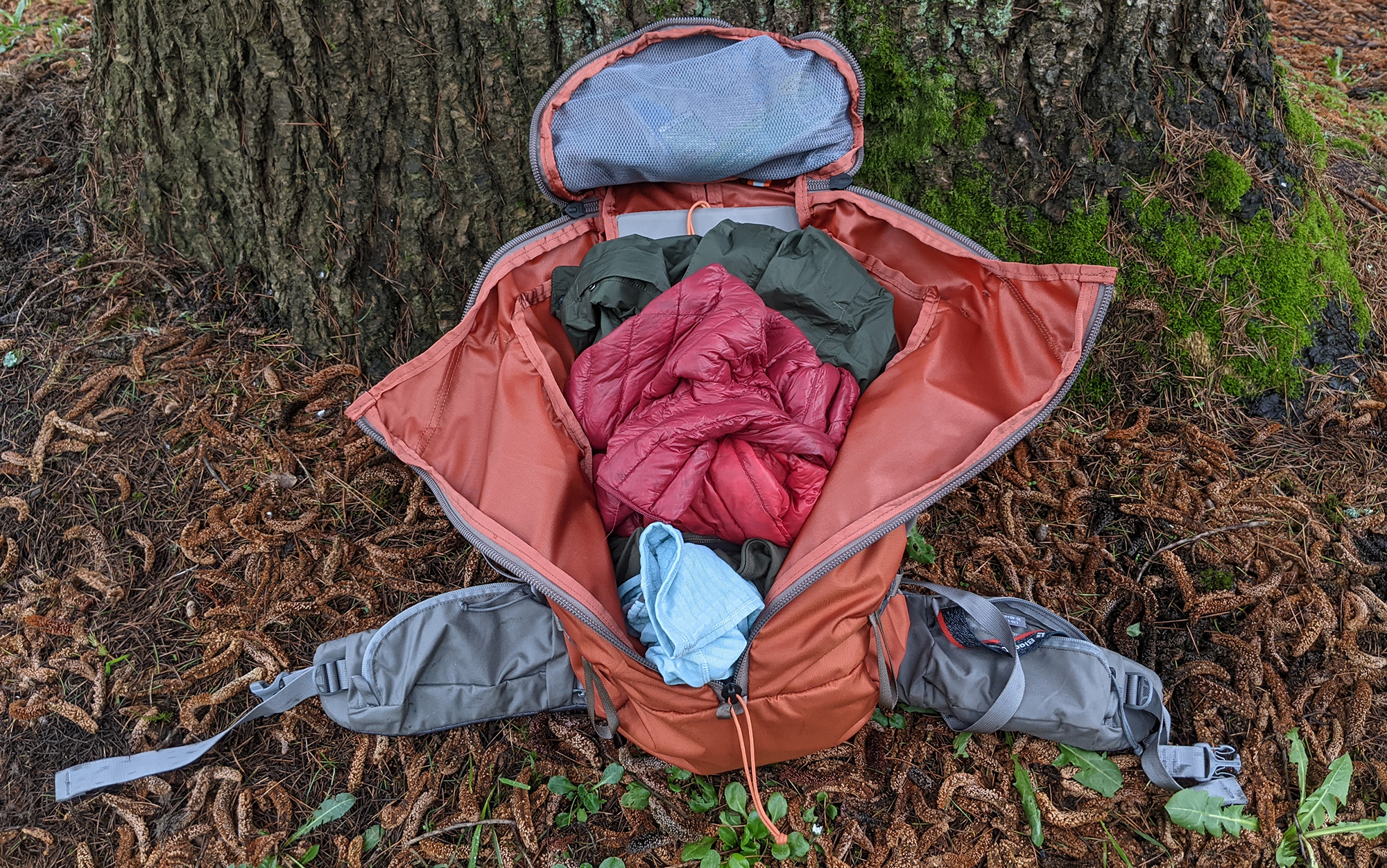
There were no stiff or rigid features along the back panel or any of the straps (although a slight seam was noticeable), making it easy to conform the pack to my body. At the same time, the back panel had just enough structure to push some of the weight off my shoulders in the event I ended up carrying a heavier load. This was also one of only two daypacks I looked at (along with the Gregory Zulu) that had an adjustable back panel. (Mystery Ranch also provided an easy-to-follow video on how to go about adjusting the back panel for maximum comfort).
Best for Families: Gregory Zulu
Key Features
- Capacity: 30 liters
- Weight: 43 ounces
- Support: Full
- Not waterproof; no provided raincover
Pros
- Large capacity (could be used for a short overnight)
- Highly adjustable
- Plenty of exterior pockets to store odds and ends
Cons
There are plenty of times that you’ll be carrying gear for more than just yourself, particularly if you have kids. In those situations, you’ll need more than 10 liters to fit all the layers and snacks you’re hauling into the backcountry.
The Gregory Zulu is a great solution for individuals hauling gear for the whole family. It’s so large that it could even be used as an overnight backpacking backpack by someone with some of the best ultralight backpacking gear. Along with the Mystery Ranch Coulee, it has a full suite of adjustments, including the back panel, waist belt, shoulder straps, load lifters, and sternum straps. During testing, the adjustability of this pack meant that it was one of the easiest to switch between different individuals (helpful if a kid needs a piggyback ride mid hike). While I appreciate its full-size hip belt pockets (just about any smartphone will fit fine in these), the lack of stretch in the front pouch pocket made it less versatile for stuffing extra layers on the go than I would have liked.
Best for Small Loads: Black Diamond Trail Zip
Key Features
- Capacity: 14 liters
- Weight: 7.4 ounces
- Support: Minimal
- Not waterproof; no provided raincover
Pros
- Lightweight
- Inexpensive
- Comfortable with small loads
- Made from a very durable material
Cons
- Limited storage capacity
- Limited storage options
A best-in-class hiking daypack doesn’t always mean a zillion bells and whistles. The Black Diamond Trail Zip was the second lightest pack I looked at, but, when fully loaded, was as comfortable as larger, heavier packs. Of course, part of that is because you really can’t fit much inside the Black Diamond Trail Zip—it just barely fit the items I was using for testing, with only a liter or so capacity to spare. That means this pack is best for experienced individuals that have their backcountry kit dialed down to the bare minimum—just what they need to have a comfortable outing in the wilderness and nothing more.
It does however, boast a couple of features that avid hikers will appreciate, including protected side storage for trekking poles, a sleeve for one of the best hydration bladders along with an access point for the hydration tube, and a separate zip pocket for small items (like keys and a wallet) inside the main zip pocket. I also liked that it was made from a 100D nylon, meaning that it’s more than durable enough to stand up to the elements.
Best Minimalist: Exped Splash 15
Key Features
- Capacity: 15 liters
- Weight: 3.7 ounces
- Support: Minimal
- Waterproof
Pros
- Waterproof
- Lightweight
- Surprisingly large capacity
Cons
- No support
- No internal storage options
The Exped Splash 15 is a no-frills choice; it’s essentially a dry sack with nylon webbing straps attached—no hip belt or load lifters in sight. While this makes it a poor choice for the heavy loads of serious dayhikes, it shines in more everyday scenarios, like stashing a puffer coat along with some snacks and a water bottle.
Living in the soggy Pacific Northwest, I especially appreciated the Exped 15 for when I was caught unawares by a spring-time midday sprinkle. Its waterproofness, combined with its roll-top closure, makes this an excellent choice for longer backpacking trips, where it can be used to store extra clothing or one of the best camping quilts enroute, then transition to a daypack for shorter expeditions from basecamp.
Best Frameless: Matador Freerain
Key Features
- Capacity: 22 liters
- Weight: 10.6 ounces
- Support: Minimal
- Waterproof
Pros
- Very comfortable
- Balances well
- Reasonably priced
- Waterproof
Cons
- No back panel
- Exterior pockets are less versatile than others I looked at
Like the Exped Splash and Black Diamond Trail Zip, the Matador Freerain does not have a supportive back panel. The upside here is that this pack is very lightweight and extremely packable. The downside … well there isn’t really a downside. As long as you are reasonably careful with how you load the Matador Freerain, this pack carries typical daypack loads comfortably. In fact, it was so comfortable that the simple (and removable) nylon-webbing hip belt ended up being unnecessary—the chest strap alone was plenty to keep the pack secure against my body.
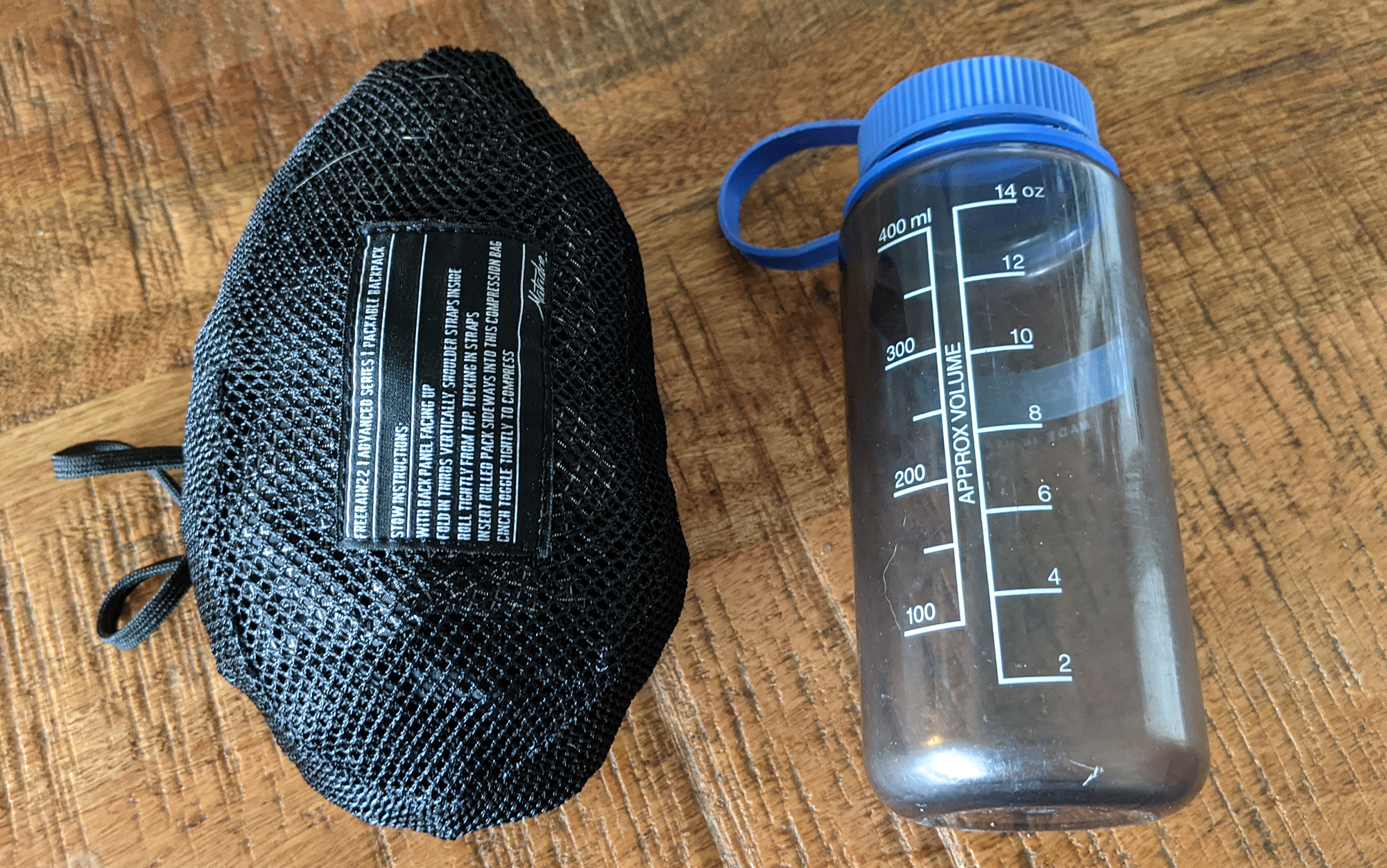
Like the Black Diamond Trail Zip, the Matador Freerain has fabric shoulder straps that conform to the shape of your shoulders. One difference between these two packs, however, is that the Freerain has load lifters, which allows you to choose how high or low to wear the pack—helpful for this long-torsoed tester.
During testing, I stuck one extra-tall full Nalgene bottle into the side to try to unbalance the pack. Impressively, and despite the minimal structure and overall weight of the pack, I could barely tell that there was any imbalance at all. That being said, it was somewhat difficult to get the bottle in there—to use on the trail you would need to stop and take off the pack to get the bottle in and out. Similarly, the sole front zip pocket just fit the snacks, map, headlamp, and filter I was using for testing, and it was a bit awkward to get items in and out. Plan to store the majority of your extra items in the main interior of this hiking daypack.
Best for Sweaty Hikers: Osprey Syncro
Key Features
- Capacity: 12 liters
- Weight: 28 ounces
- Support: Moderate
- Integrated raincover
Pros
- Air flow along the back panel
- Structured fit
- Integrated rain cover
- Plenty of storage options
Cons
- Heavier than similar capacity packs
- Expensive
If you tend to work up a sweat on even mild day hikes, then it’s worth checking out the Osprey Syncro. Like other Osprey packs, the Sycnro features a ventilated back panel, which allows air to flow across your back, reducing moisture build up and minimizing the friction that can result in chafing and other discomfort.
While other small-capacity packs tend to have a single large storage compartment and not much else, the Osprey Syncro has a full suite of pockets, including two side mesh pockets, a small front storage pocket (perfect for your keys and wallet), a second front storage pocket with an internal mesh organization system, and a sleeve for your hydration bladder at the back. It also has an attachment buckle for a bicycle helmet.
While the Syncro does have a structured back panel, it does not have any adjustment points beyond the shoulder straps and sternum strap. Counterintuitively, this can actually cause the load to feel less balanced than if there was no back panel at all, as the top of the pack can pull away from the shoulders. Keep your heavier items packed at the bottom of this pack as much as possible.
Best Hydration: CamelBak Rim Runner
Key Features
- Capacity: 22 liters
- Weight: 28 ounces
- Support: Moderate
- Not waterproof; no provided raincover
Pros
- Affordable
- Dedicated hydration sleeve
- Includes hydration bladder
Cons
- Less supportive than you might want for a fully loaded pack
The CamelBak Rim Runner is a great entry-level hiking daypack that includes the CamelBak Crux, OL’s pick for best hydration bladder for hiking. While other hiking daypacks have nothing more than a simple cloth sleeve for the hydration bladder, the Camelbak Rim Runner has a whole separate zip sleeve, in addition to the main zip pouch and smaller zip pocket at the front. (Strangely, the pack also has two side mesh bottle holders.)
The CamelBak Rim Runner is a middle of the road pack for adjustment points—with shoulders straps, a sternum strap, and a minimal hip belt—if you find that the fully featured back panels are overkill for you but you want something more supportive than a school pack, this pack is well-priced starting point.
Best Backpack Cooler: Hydroflask Day Escape
Key Features
- Capacity: 20 liters
- Weight: 2.6 pounds
- Support: Minimal
- Waterproof
Pros
- Very comfortable to carry
- Waterproof
- Mesh pocket
Cons
- No hip belt
- Comparatively expensive
The Hydroflask Day Escape was my best overall pick for the best backpack coolers, in large part due to its shape: It has a wider frame, with less depth, which holds the weight closer to your body than models that were free form or structured like a traditional cooler. While the backpack had (just) enough structure to support a heavier load, the lack of hip belt means that you should resist the urge to fully load this one up before heading out on a longer hike. One feature common to backpacks but not to backpack coolers that the Day Escape included was a haul handle, which is handy for at-home storage.
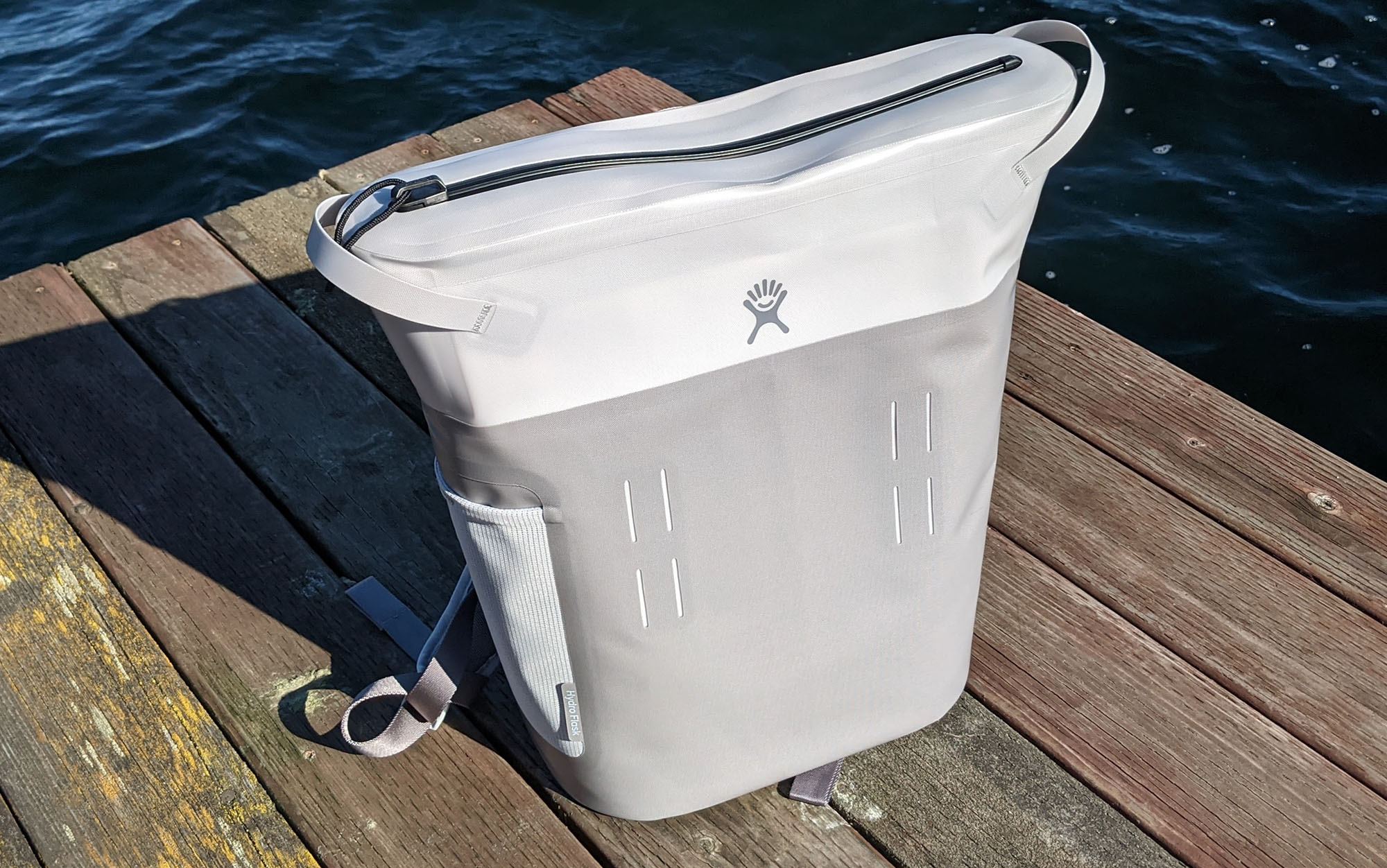
In addition to being comfortable, the Hydroflask Day Escape also has all the hallmarks of a great backpack cooler, being fully waterproof and holding ice for forty-eight hours during my insulation test. I also liked that it had an outside mesh pocket—useful for stashing small items or needing somewhere to stick your trail beer on the go.
Best for Travel: Mountain Hardwear Redeye 45
Key Features
- Capacity: 45 liters
- Weight: 50 ounces
- Support: Full
- Not waterproof
Pros
- Padded hipbelt, straps, and back panel
- Pocket with flap for easy tucking and grabbing
Cons
Our pick for the best travel backpack, the Mountain Hardwear’s Redeye is built for speed. It’s slim for easy maneuvering in crowded spaces. It also has load lifters, a padded hipbelt, a padded back panel, padded straps, and a sternum strap to carry heavy weight comfortably. You can easily access the main compartment with a back panel zipper and U-shaped zipper on top. A long vertical side pocket features a lip of fabric over the top so that you can tuck or grab something from this pocket without unzipping anything.
A water bottle pocket on the opposite side has a cinch cord to keep items from falling out. The lid of the bag is also a pocket and there is a padded laptop sleeve. The thoughtful design of the many pockets make this bag the perfect carry on. The zipper pulls have loops making it quick and easy to access all zipper pockets. Handles on the front and back of the top make it easy to grab your luggage off a conveyor belt or out of a car or overhead bin. The removable hipbelt and tuckable straps can further streamline this pack for going through security or checking the bag.
It’s structured and comfortable when carrying gear, heavy loads, and irregularly shaped objects, making it ideal for adventure travel too. The full back panel access is particularly convenient for car camping because you can access the contents of your bag without having to dump everything out or dig to the bottom. There are external attachment points for carabiners as well. Overall, this is the best carry-on backpack for almost any method of travel. —Ashley Thess
Best Budget: Decathlon Quechua MH500
Key Features
- Capacity: 20 liters
- Weight: 39 ounces
- Support: Full
- Integrated raincover
Pros
- Low price
- Padded hip belt and ventilated back panel
- Easy to grab water out of the side pockets
- Integrated rain fly
Cons
You’d think there’d be a catch with Quechua MH500 given its low price—either durability would take a hit, or it would be uncomfortable (or some combination of the two). But on several early-spring day hikes in the foothills of the Cascades, this pack performed just as well as its more expensive counterparts without cutting corners.
This one has all the features that I’ve come to expect from a great daypack—padded hipbelt and shoulder straps with adjustable load lifters, a mesh back panel, a sternum strap, tons of pockets, and an integrated rainfly (although I’ve found that the waterproof coating on the polyurethane fabric does a fine job with short-burst showers). If I had a gripe, it’d be that it’s missing the integrated whistle on the sternum strap, but it’s easy enough to carry a separate whistle if you have any concerns about getting lost.
Decathlon offers this pack in two sizes: for individuals below 5 foot 7 inches tall, and for individuals above 5 foot 7 inches tall. People with long or short torsos may want to size up or down if they are around the 5 foot 7 inches benchmark. The hip belt here is also on the narrow side, and won’t fit as wide a range of individuals as other daypacks.
How to Choose the Best Hiking Daypack
Capacity
Smaller hiking daypacks are lighter, and therefore more comfortable, than more spacious models. But it’s important that you have enough space in your hiking daypack for all the essentials that you may end up needing on any given trip.
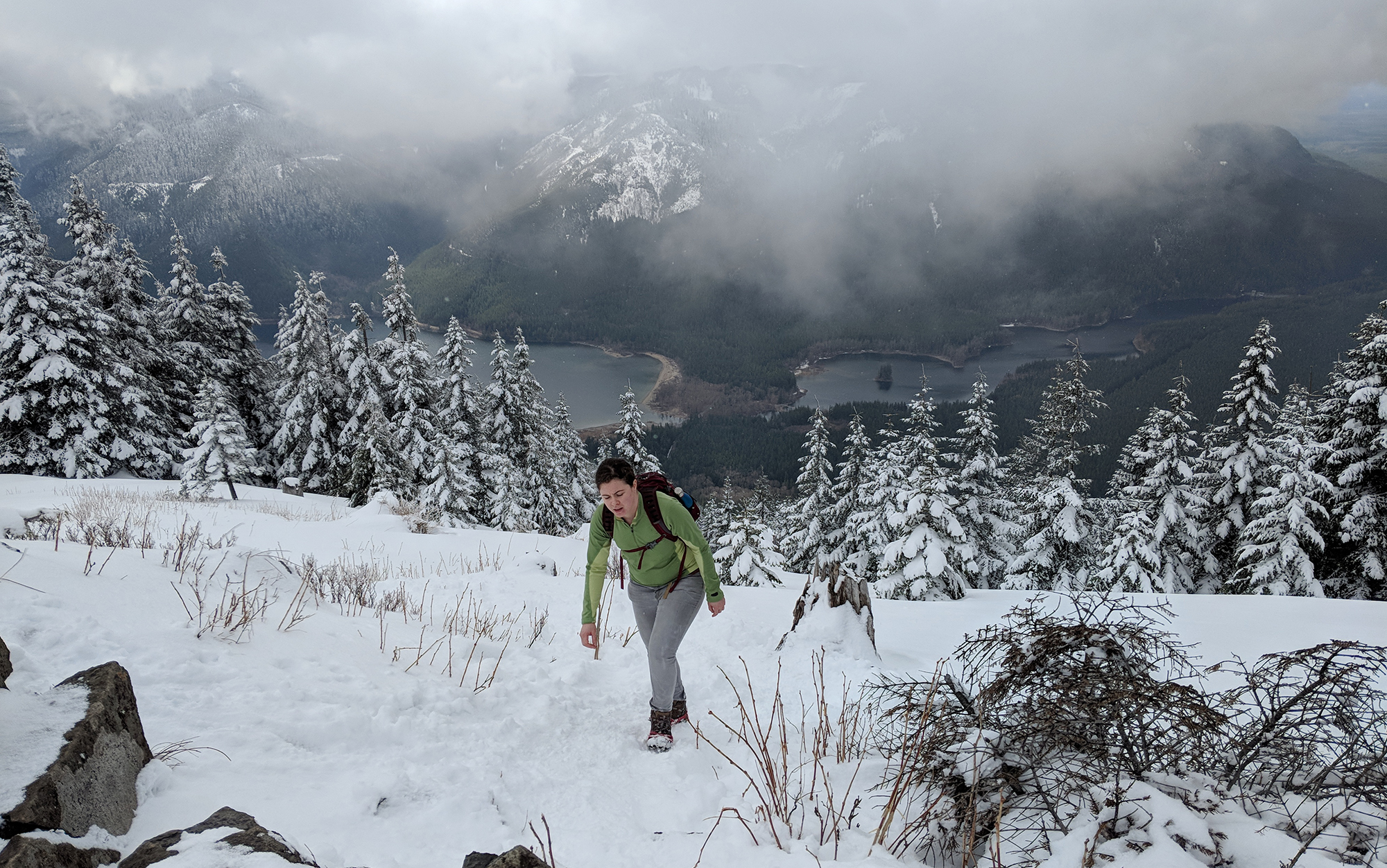
Try to choose the smallest hiking daypack that you think will support your needs while out on the trail. If possible, choose two daypacks—one large and one small—to give yourself a wider range of options.
Support
The hiking daypacks I looked at for this story had support that ranged from shoulder-strap adjustment only to a full suite of adjustment points including back panel, waist belt, shoulder strap, load lifters, and sternum straps. What you need depends on your personal preferences, as well as the weight of the typical load you carry into the backcountry. If you aren’t yet sure what your needs are, start with a waist belt and shoulder straps and level up or down from there.
Pockets
While some think that with pockets, more is always better, the reality is that too many pockets can start to cause problems, as it adds weight and represents a future fail point (particularly if it is a zip pocket). Typically, the more experienced a hiker is, the fewer pockets they ultimately end up needing or using.
Waterproofness
The majority of hiking daypacks are not waterproof or even water resistant. If you are planning to do a lot of hiking in soggier parts of the country, it’s worth purchasing a rain cover for your daypack in addition to one of the best backpacking rain jackets.
FAQs
Q: What size daypack is best for hiking?
Daypacks are typically between 10 liters and 30 liters. The size that is right for you depends on how much gear you typically bring with you, including additional layers, food, and gear. If you are purchasing a daypack for an avid hiker, between 18 and 25 liters is a great starting point for most people.
Q: What is the difference between a daypack and a backpack?
While daypack and backpack are interchangeable terms, backpacks you use for overnight trips typically have a larger capacity than what you need for a day trip.
Q: Is a travel backpack better than a hiking backpack?
Travel backpacks are not better than hiking backpacks for hiking. Travel backpacks are designed to maximize the organization and accessibility of your gear, while hiking backpacks focus on long-term comfort.
Q: What color hiking backpack is best?
The most popular colors for hiking backpacks are neutral tones like tans, greens, blues, and blacks, but for visibility purposes it can be helpful to wear brighter colors like red, orange, pink, yellow, or purple. If you plan to regularly hike in mosquito country, try to avoid cyan, orange, red, and black, as these are known to attract mosquitoes.
Q: What should I pack for a day of hiking?
What you should pack for a day of hiking depends on the environment that you plan to be hiking in, but there are some basics you should be sure to include. Beyond what you anticipate using on your hike, be sure to bring extra food and water, including one of the best backpacking water filters if there will be accessible water along your route. Next, pack warm clothing, even if you plan to be hiking in hot weather, as these will protect you from dropping temperatures in the event your hike takes longer than anticipated or, worse, you get stuck overnight.
If possible, also consider bringing along a personal locator beacon or satellite messenger if you will be out of cellphone range on your hike. Before you leave for your hike, be sure to share your plans for the day with a trusted friend or family member, including when you expect to be back and what that person should do if you don’t check in.
Q: Are daypacks waterproof?
Some, but not all, daypacks are waterproof. Check manufacturer specifications (provided in the key features under every product) to know for sure.
Why Trust Outdoor Life?
Since 1898, OL has been a leading authority in testing and reviewing hunting gear, fishing tackle, guns and shooting equipment, and much more. We have more than a century-long history of evaluating products, and we’re now bringing that expertise to online reviews. Our editors are experienced outdoorsmen and women, and most importantly, we’re trained journalists. We prioritize field testing and objective data when reviewing products. We conduct interviews with gear manufacturers and engineers as well as outdoor experts so that our readers have an understanding of how and why a product works—or doesn’t.
Advertising does not influence our gear reviews and it never will. While we always focus our coverage on standout products—because we want our readers to be aware of the latest and greatest gear—we also cover the flaws and quirks of any given product.
Final Thoughts
The best hiking daypack for you depends on your personal preferences and the types of hikes that you like to plan. Outdoor Life looked at a wide spectrum of hiking daypacks for this story, and we’re confident that any of the below options would serve you well on your next adventure.

